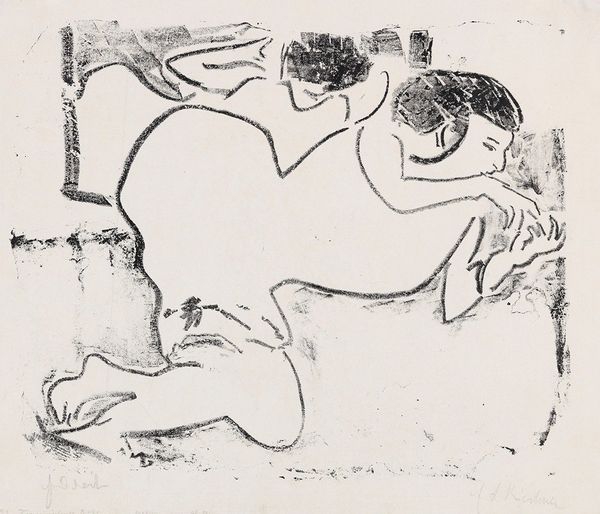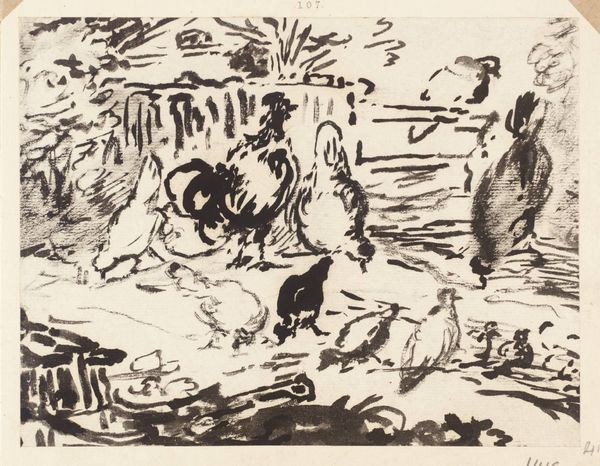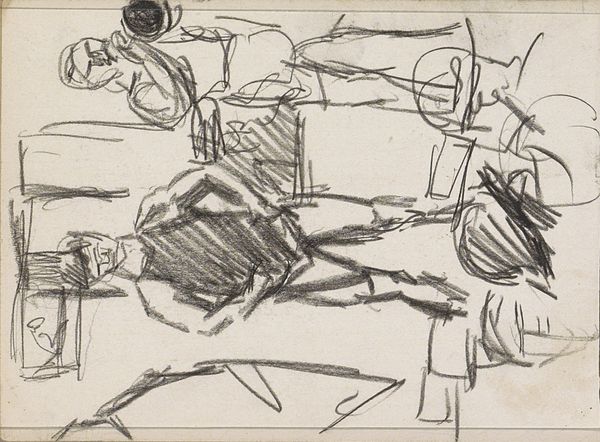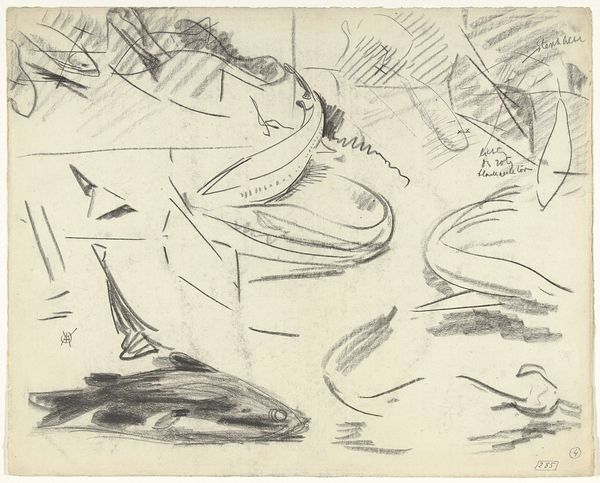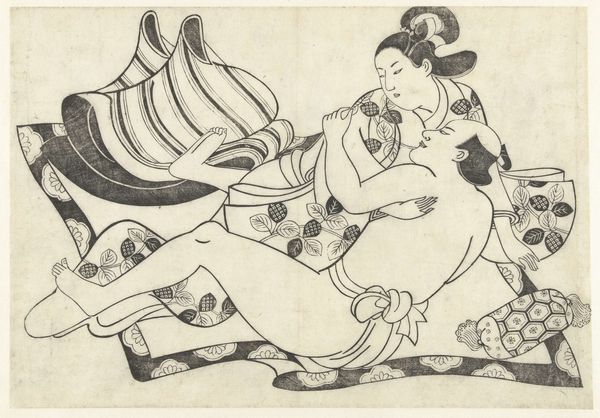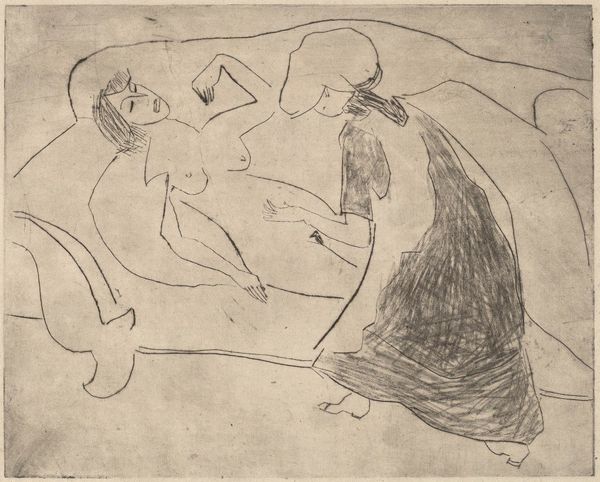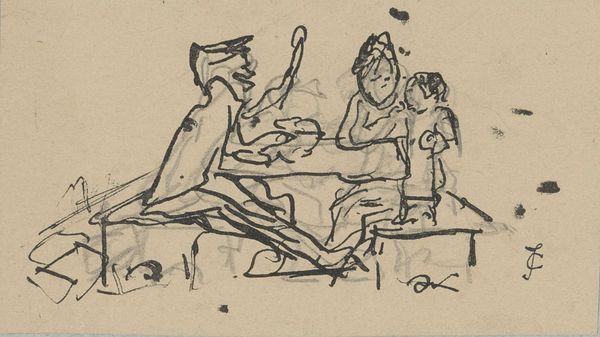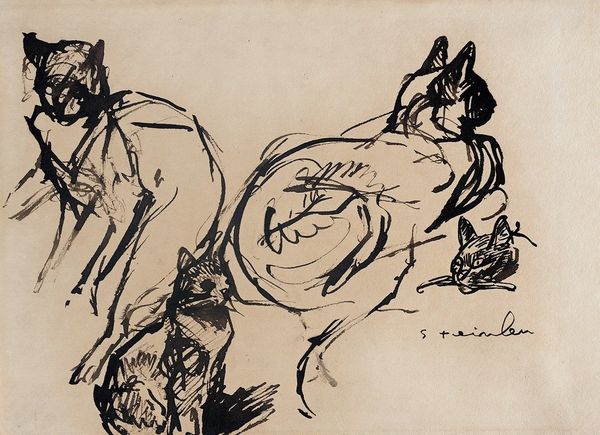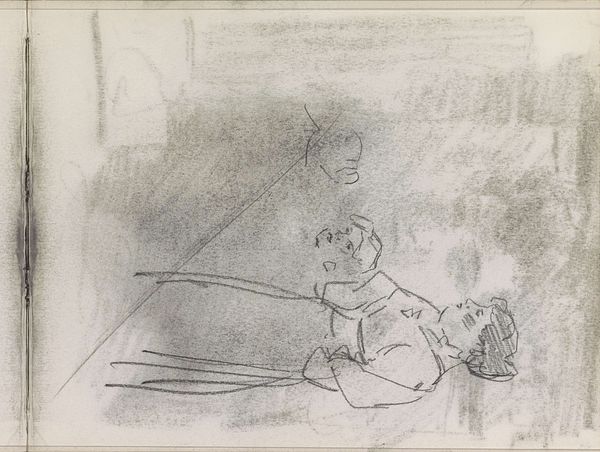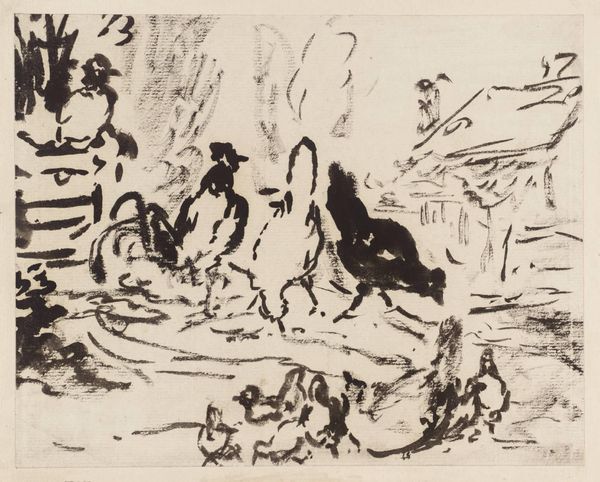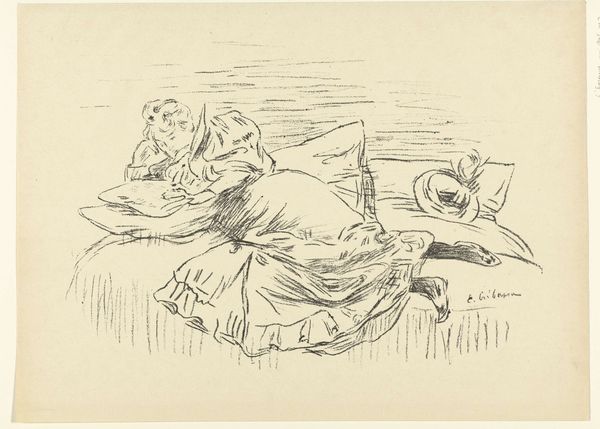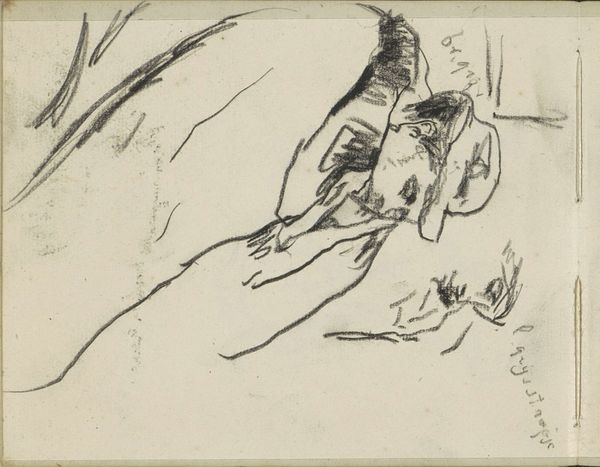
print, etching
#
ink drawing
# print
#
etching
#
landscape
#
figuration
#
expressionism
#
history-painting
#
monochrome
Dimensions: image: 31.5 x 42.5 cm (12 3/8 x 16 3/4 in.) sheet: 36.5 x 56.2 cm (14 3/8 x 22 1/8 in.)
Copyright: National Gallery of Art: CC0 1.0
Editor: This is "Siesta," an etching by Ernst Ludwig Kirchner, created between 1911 and 1912. It has a restless, almost uneasy feel despite its title. All the figures seem caught in a moment of disturbed sleep. What does this image tell you? Curator: It tells a complex story, doesn’t it? Kirchner, as a key figure in the Expressionist movement, often explored themes of alienation and urban anxiety. While "Siesta" depicts rest, the angular lines and crowded composition disrupt any sense of genuine peace. Consider the historical context: pre-war Germany, a period of rapid industrialization and social change. Is this "siesta" a refuge, or a symptom of societal unease, perhaps even a commentary on the exhaustion of modern life? How does the rendering of the figures, their almost grotesque distortion, contribute to this feeling? Editor: I see what you mean. The faces are barely defined, almost mask-like, and their postures seem forced. It’s not a restful scene at all. So, this “siesta” isn't about leisure, but maybe reflects a deeper cultural weariness? Curator: Precisely. Kirchner was deeply engaged with the anxieties of his time. He used his art to critique the dehumanizing effects of modernity, especially its impact on interpersonal relationships. This work is exemplary of that viewpoint. The “history painting” elements mentioned as AI tags are telling. Considering how Kirchner and Die Brücke drew from non-western art traditions for inspiration, what if they were imagining the long arch of history itself collapsing inward? Editor: It is as though this image is not of peace at all, but turmoil and perhaps an inevitable period of change. This work is quite provocative once you realize how socially engaged Kirchner was, and the period in which this was made. Thank you for this new perspective! Curator: Absolutely. It's in the intersections of personal expression and socio-political context that art truly speaks to us. Always ask: what were the issues and cultural contexts surrounding the creator when this was made, and how do these conditions affect how one might interpret the work?
Comments
No comments
Be the first to comment and join the conversation on the ultimate creative platform.
